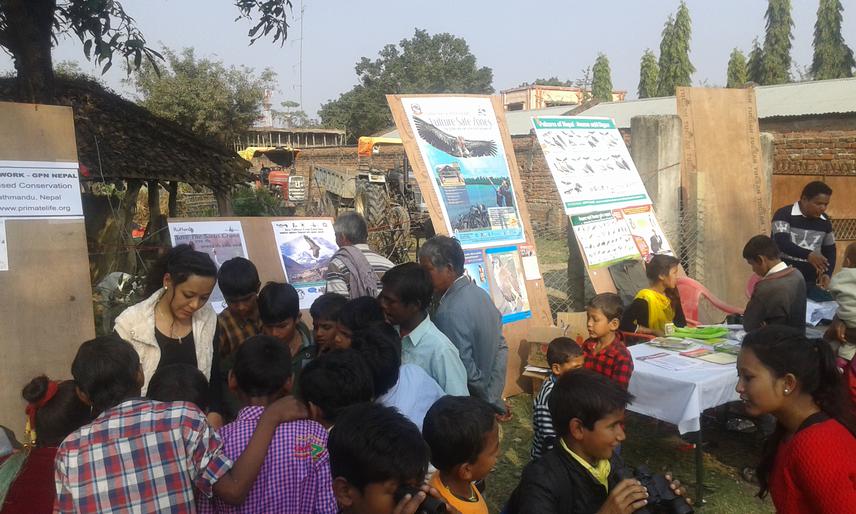Dikpal Krishna Karmacharya
Other projects
20 Dec 2012
Extensive Exploration and Conservation of Himalayan Vulture in Annapurna Conservation Area
12 Mar 2014
Population Modelling and Participatory Conservation of Endangered Vultures in Nepal Himalaya
This project endeavours to uphold long term conservation programs prioritized by Government's Vulture Conservation Action Plan and Blueprint of SAVE consortium, collaborating with governmental, non-governmental and community based organizations introducing new tools- the UAV, Conservation Drone and data loggers in Himalayan regions of Nepal.

Twenty years ago there were tens of millions of Vultures in Indian-subcontinent. They provided valuable ecosystem service by disposing millions tonnes of waste carrion from dead cattle each year. Now they and their services are nearly all gone.
Nepal holds nine species of Vultures. Most of them are still threatened with global extinction. Therefore, IUCN has upgraded them as Critically Endangered, endangered and near threatened.
The continuous use of veterinary drugs-diclofenac, aceclofenac, ketoprofen and recently human diclofenac has been identified as the major cause of their declines. These are used to treat symptoms of disease and injury in domesticated ungulates in many parts of Indian-subcontinent, which causes severe kidney damage and extensive visceral gout in Vultures after consuming freshly treated livestock carcasses.
Recently, the devastating mega earthquake hit Nepal Himalayas, the major indicator zone of climate change, therefore, the proposed collaborative long-term conservation program monitors the effect of mega earthquake and climate change in Vultures and landscapes of Himalayan region operating latest technology-the UAV Conservation Drone and Climatic Data Loggers which are not only a safer way for locating species, their nests, monitoring behavioural ecology, land covers and climatic parameters without direct human interference but also less costly, more efficient and more precise than traditional approaches. It also changes the way of data collection from high-elevated, eroded, steep, rocky mountain-cliffs and earthquake-hit regions where still trails are not accessible and almost no possibility to reach there to monitor species. Even using telescope it seems unclear and smaller, which needs a birds-eye view. Therefore, the drones give first hand high-definition visual information on species account and land covers which will be the ideal information from Himalayas.
The project provides field based capacity building opportunities for scattered hidden treasures and conservation enthusiasts to upgrade their skills in research and conservation, introducing application of recent tools and techniques. This project also advocates local conservation groups to rejoice varieties of National and International green days flooding the conservation messages in all accessible spaces. The project focuses on mobile conservation library to make easy access with the source of conservation resource materials in hot spots and remote regions.
Therefore, the project aids to uphold long term conservation programs prioritized by Government's revised 'Vulture Conservation Action Plan for Nepal (2015-2019)' (http://www.dnpwc.gov.np/people_story/page/publication/6) and 'A Blueprint for the Recovery of South Asia’s Vultures' of SAVE-consortium (http://www.save-vultures.org/save_resources_actionplans.html), for the revival of all viable Vulture species in the wild.